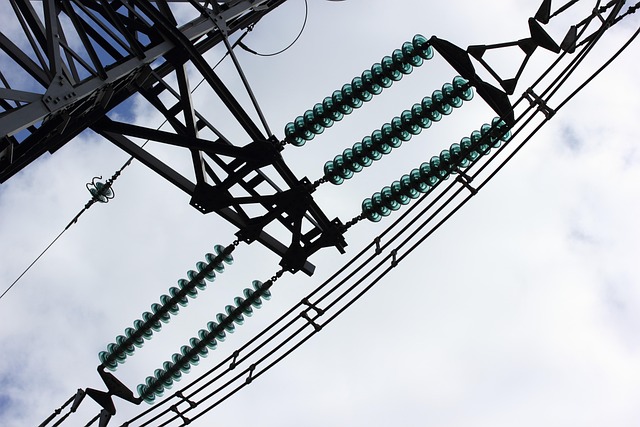Internal linking optimization using a link equity distribution tool is crucial for SEO success. These tools analyze website architecture, identify weak links and redundant content, and strategically redistribute link equity to relevant pages. This enhances crawl efficiency, user experience, and keyword targeting, leading to improved search engine rankings and increased organic traffic. By selecting a tool with robust data visualization and reporting features, users can implement informed changes, ensuring every page receives adequate authority and relevance. Continuous monitoring through the link equity distribution tool allows for iterative improvements, aligning website structure with SEO best practices and driving better performance in the competitive digital landscape.
Struggling with internal linking issues hindering your site’s SEO performance? This guide is your solution. We’ll walk you through understanding internal linking, identifying weak or broken links, and leveraging essential tools like link equity distribution tools. Learn how to choose the right one, implement and optimize for maximum impact, and continually measure success. Discover the power of efficient link equity distribution to elevate your website’s visibility in today’s competitive digital landscape.
- Understanding Internal Linking and Its Impact on SEO
- Identifying Weak or Broken Links on Your Website
- The Role of Link Equity Distribution Tools
- How to Choose the Right Link Equity Distribution Tool
- Implementing and Optimizing Link Equity Distribution
- Measuring Success and Continuous Improvement
Understanding Internal Linking and Its Impact on SEO

Internal linking is a crucial aspect of website architecture that plays a significant role in search engine optimization (SEO). It refers to the process of creating links within your site’s content, guiding users and search engines from one page to another. These links distribute what is known as “link equity,” which is passed from one webpage to another, influencing their overall authority and relevance in the eyes of search algorithms. Optimizing internal linking can lead to improved crawl efficiency, better user experience, and enhanced keyword targeting.
A well-structured internal linking strategy ensures that pages on your website are connected logically, allowing search engine crawlers to understand the hierarchy and relationships between different sections. This is particularly important for larger websites or those with complex structures. Utilizing a link equity distribution tool can help identify weak links, redundant content, and areas where improvement is needed. By implementing an effective internal linking strategy, including optimization techniques such as anchor text variety and relevant contextual linking, website owners can improve their search engine rankings, increase organic traffic, and provide a seamless navigation experience for users.
Identifying Weak or Broken Links on Your Website

Identifying weak or broken links on your website is a crucial step in optimizing your site structure and improving user experience. Start by using a link equity distribution tool to scan your entire site, flagging any 404 errors or dead ends. These tools analyze the crawl data to map out your site’s architecture, revealing hidden issues that may be hindering both search engine visibility and user navigation.
Once identified, these weak links can be addressed through a comprehensive link equity distribution strategy. This involves reassigning link equity from broken or irrelevant pages to relevant content, ensuring that valuable signal is directed where it matters most. A link equity distribution tutorial or optimization guide can provide detailed instructions on how to implement these changes effectively, ultimately strengthening your site’s internal linking and enhancing its overall performance.
The Role of Link Equity Distribution Tools

Link equity distribution tools play a crucial role in identifying and rectifying internal linking problems that can hinder website performance. These tools analyze the flow of link equity within a site, revealing areas where links are not effectively distributing value. By understanding this distribution, SEO practitioners can implement targeted strategies to strengthen the overall internal linking structure.
Accessing detailed insights into link equity distribution tips enables users to address weak or broken links, ensuring that each page receives its fair share of authority and relevance. This meticulous process, guided by link equity distribution SEO tutorials, facilitates a more balanced and efficient flow of signal throughout the website, ultimately enhancing its search engine rankings and user experience.
How to Choose the Right Link Equity Distribution Tool

When selecting a link equity distribution tool, it’s crucial to align your choice with your site’s specific needs and SEO goals. Not all tools are created equal, so evaluating them based on features like data visualization, detailed reporting, and customization options is essential. Look for a tool that offers a comprehensive link equity distribution tutorial or guides to help you understand the data it provides. This ensures you can accurately interpret link strength across your internal links and make informed decisions.
Consider your technical capabilities as well. Some tools may have complex interfaces requiring SEO expertise, while others offer simpler, user-friendly designs suitable for non-technical users. Additionally, link equity distribution tips from reputable sources can guide you in configuring the tool effectively to maximize its benefits for your website’s overall link equity distribution SEO.
Implementing and Optimizing Link Equity Distribution

Implementing and optimizing link equity distribution is a crucial step in enhancing your site’s SEO performance. Link equity refers to the value passed between pages via hyperlinks, which plays a significant role in search engine rankings. Using a link equity distribution tool can help identify weak or broken links within your site structure, allowing you to strategically reroute or replace them. This ensures that page authority is evenly distributed across your website, strengthening its overall SEO profile.
In the process of optimization, focus on creating a user-friendly and search engine-friendly internal linking architecture. A well-distributed link equity ensures that important pages receive the necessary support from relevant sources, boosting their visibility and credibility in search results. This involves analyzing anchor text, link placement, and page relevance to maintain a natural and effective flow of link equity distribution, ultimately leading to better organic traffic and improved search rankings for targeted keywords.
Measuring Success and Continuous Improvement

Measuring success is a critical component of any internal linking project. By utilizing a link equity distribution tool, you can quantify and monitor improvements in your site’s architecture. This data provides valuable insights into the effectiveness of your strategy, revealing which pages are benefiting from enhanced link equity and where further optimization may be needed. Regular analysis allows for continuous improvement, ensuring that your website remains not only technically sound but also aligned with SEO best practices.
A well-executed link equity distribution strategy translates to better crawlability, faster loading times, and an improved user experience—all factors that contribute to better search engine rankings. As you iterate and optimize based on measured outcomes, you’ll foster a healthier internal linking structure, driving organic traffic and boosting overall website performance. This ongoing process is key to staying ahead in the ever-evolving digital landscape.
